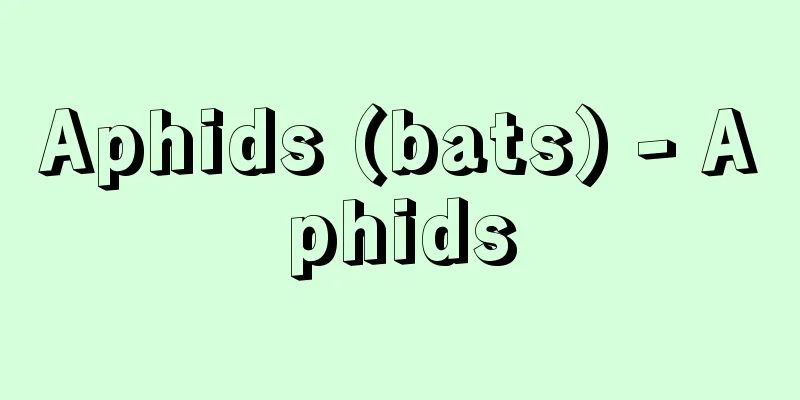Fine snow - Sasameyuki

|
A full-length novel by Tanizaki Junichiro. Parts of it were published in Chuokoron in January and March 1943 (Showa 18). Volume 1 of The Makioka Sisters was privately published in 1944. Volume 2 was serialized in Fujin Koron from March 1947 (Showa 22) to October of the following year. Volume 1 was published by Chuokoron-Shinsha in 1946, volume 2 in 1947, and volume 3 in 1948. This is Tanizaki's longest novel, depicting the four sisters of the Makioka family, an old family in Senba, Osaka, and revolves around the five arranged marriages of the third sister, Yukiko, who is beautiful but out of touch with anyone, and unfolds like a picture scroll depicting the lives and annual events of the wealthy class in the Hanshin area from 1937 to 1941. The eldest sister, Tsuruko, who married and took over the head Makioka family, moves to Tokyo when her husband is transferred there, and the second sister, Sachiko, and her husband, Sadanosuke, take over the care of the two younger sisters. The novel is written by following Sachiko, who is modelled on Tanizaki's wife Matsuko, and features a contrapuntal structure depicting Yukiko, who may appear "outdated and conventional," but who possesses natural virtues such as "femininity and refinement," and her younger sister, Taeko, who is independent-minded and sexually uninhibited. Finally, Mimaki Minoru, the illegitimate child of a certain nobleman, appears, and Yukiko's story of "Yukiko's Story" comes to an end when she finally marries him. However, there is no doubt that the motivation for writing this novel, written during the difficult period from the end of the war to just after Japan's defeat, was a deep-rooted nostalgia for the good old days. The novel has been adapted into many plays and films, as it allows for a glamorous encounter between four beautiful sisters. It has been adapted into film three times, by directors Abe Yutaka (1950, Shintoho), Shima Koji (1959, Daiei), and Ichikawa Kon (1983, Toho). [Norio Okubo] movieA Japanese film based on a novel by Junichiro Tanizaki. It is a grand picture scroll that revolves around the four sisters of the Makioka family, an old family in Senba, Osaka, that is on the decline before the war, and their husbands, lovers, and arranged marriage partners, and is comparable to The Tale of Genji. It has been made into a film three times, with the four sisters played by star actresses of the time, and the first was a blockbuster with an unprecedented production budget. The first film was made in 1950 (Showa 25) by Shintoho's director Abe Yutaka (1895-1977), who returned from his training in Hollywood in 1925 and devoted himself to directing, quickly becoming a first-class director. His skill in efficiently depicting characters by evenly distributing them on the set is impressive. The black-and-white Shintoho version focuses on episodes involving Takamine Hideko, who plays the fourth daughter, Taeko, and her two lovers, the spoiled jeweler Okuhata (Tanaka Haruo, 1912-1992) and the earnest photographer Itakura (Tazaki Jun, 1913-1985). The Daiei version, released in 1959 in color and set in the postwar period and directed by Shima Koji (1901-1986), focuses on the love life of Kano Junko (1936-), who plays Taeko, but also portrays Yamamoto Fujiko, who plays the third daughter, Yukiko, in a glamorous manner. In the 1983 Toho version directed by Ichikawa Kon, the story revolves around the arranged marriage of Yoshinaga Sayuri, who plays the role of Taeko as a fragile yet strong-willed woman, and time is also devoted to the perspective of Teinosuke (Ishizaka Koji, 1941-), who has a feminine and passive attitude. The gorgeous kimono competition is also a highlight, but even more so, the four sisters are depicted interwoven with seasonal scenery, including the cherry blossom storm in Saga, Kyoto, at the beginning. The first two films were adapted by Yasumi Toshio (1903-1991), and the third was directed by Ichikawa Kon and Hidaka Shinya (1921-2002). Handel's "Ombra mai fu" resonates solemnly throughout the film as the theme song. [Shohei Sakajiri] "The Makioka Sisters: Volumes 1, 2 and 3 (Obunsha Bunko, Kadokawa Bunko, Kodansha Bunko, Shincho Bunko)" [References] | |Source: Shogakukan Encyclopedia Nipponica About Encyclopedia Nipponica Information | Legend |
|
谷崎潤一郎(じゅんいちろう)の長編小説。1943年(昭和18)1、3月『中央公論』に一部発表。1944年『細雪 上巻』私家版刊。1947年(昭和22)3月から翌年10月まで『婦人公論』に下巻連載。上巻46年、中巻47年、下巻48年、中央公論社刊。 大阪の船場(せんば)の旧家蒔岡(まきおか)家の四姉妹を描いた谷崎の最大長編で、3番目の、美人なのに縁遠い雪子の5回に及ぶ見合いを中軸に、1937年から1941年に至る阪神地区の富裕階層の生活や年中行事が、絵巻物風に展開してゆく。婿をとって本家の蒔岡家を継いだ長姉鶴子(つるこ)は、夫の転勤で東京へ移り、かわって次姉の幸子(さちこ)とその夫貞之助(さだのすけ)が、2人の妹のめんどうをみている。この小説の描写は、ほとんど谷崎の夫人松子がモデルの幸子に密着して進められ、「時代おくれ、因循姑息(いんじゅんこそく)」とみえるが「女らしさ、奥ゆかしさ」という天然の美質をもつ雪子と、その妹で、独立心が強く性的にも奔放な末娘の妙子(たえこ)が対位法的構成で描かれる。最後に、某公卿(くぎょう)華族の庶子という御牧実(みまきみのる)が現れ、ようやくこの人物と結ばれるところで「雪子物語」の『細雪』は終止符を打つが、戦争末期から敗戦直後という多難な時期に書かれたこの小説の執筆動機に、古きよき時代への懐旧の念が根強くあったことは疑えない。美人の四姉妹が中心となる華やかな顔合わせが可能なため、劇化、映画化も多い。映画化は阿部豊監督(1950・新東宝)、島耕二監督(1959・大映)、市川崑(こん)監督(1983・東宝)の3回。 [大久保典夫] 映画日本映画。谷崎潤一郎原作。戦前の大阪の船場の没落してゆく旧家、蒔岡家の四人姉妹を中心に、その夫や恋人、見合い相手などが絡みつつ展開する一大絵巻で、「源氏物語」にも比肩される。3度映画化されており、蒔岡家の四姉妹はその当時のスター女優が務め、1作目は破格の製作費の大作だった。1950年(昭和25)、初めての映画化は新東宝の阿部豊(あべゆたか)(1895―1977)監督で、1925年にハリウッドでの俳優修行から戻ると、監督に専心し、たちまち一流になった人。セットにまんべんなく人物を配して効率よく描き出す手腕は見事である。白黒の新東宝版は、四女の妙子役の高峰秀子と二人の恋人、宝石商のぼんぼん奥畑(田中春男(たなかはるお)、1912―1992)、生真面目なカメラマン板倉(田崎潤(たざきじゅん)、1913―1985)などの挿話に重きが置かれる。1959年、カラーで時代設定が戦後になった島耕二(しまこうじ)(1901―1986)監督の大映版では、妙子役の叶順子(かのうじゅんこ)(1936― )の恋愛に光があてられるが、三女の雪子役の山本富士子も華やかに描かれる。1983年、市川崑監督の東宝版では、妙子役をはかなげでありながら芯の強い女性として演じる吉永小百合の見合い話を中心に、女性的な受身の姿勢の貞之助(石坂浩二(いしざかこうじ)、1941― )の視点にも時間が割かれる。豪華絢爛(けんらん)たる着物の競演も見どころだが、それ以上に冒頭の京都嵯峨(さが)の桜吹雪をはじめとする四季折々の風景を織り交ぜて描かれる四姉妹の姿に魅了される。2作目まで、脚色は八住利雄(やすみとしお)(1903―1991)を踏襲し、3作目は市川崑、日高真也(ひだかしんや)(1921―2002)。ヘンデル作曲の「オンブラ・マイ・フ」がテーマ曲として随所で荘重に響いている。 [坂尻昌平] 『『細雪』上中下(旺文社文庫・角川文庫・講談社文庫・新潮文庫)』 [参照項目] | |出典 小学館 日本大百科全書(ニッポニカ)日本大百科全書(ニッポニカ)について 情報 | 凡例 |
<<: Gisuke Sasamori - Gisuke Sasamori
Recommend
Aardvark (earth pig)
A mammal of the family Aardvark (illustration) in ...
Bongo, AB (English spelling) BongoAB
During this time, Gabon's abundant mineral re...
Antep - Antep
...Population: 716,000 (1994). Formerly called Ay...
Electric guitar
A guitar that uses electricity to amplify the soun...
Unmei-den
The name of a palace in the Heian Palace's in...
Kingdom of Benin
Benin was founded in the 14th century in the trop...
Duck - Duck
Among birds of the Anatidae family, this refers to...
Inatori [Hot Springs] - Inatori
Located in Higashiizu-cho, Kamo-gun, Shizuoka Pref...
Craftsman - Shokunin
A craftsman is someone who produces handmade good...
Maxwell's demon
An imaginary demon (also called Maxwell's dem...
Bothrops jararaca (English spelling) Bothropsjararaca
… [Takahiro Matsui]. … *Some of the terminology t...
Obai-in (Daitoku-ji Temple)
…After the fall of his master, he seems to have b...
Briggs, C.
…(1) Celtic fairies, (2) Teutonic elves, (3) Arth...
Armeria plantaginea (English spelling)
… [Munemin Yanagi]. … *Some of the terminology th...
shuraṭa (English spelling) shurata
...The term refers to the police or police office...









